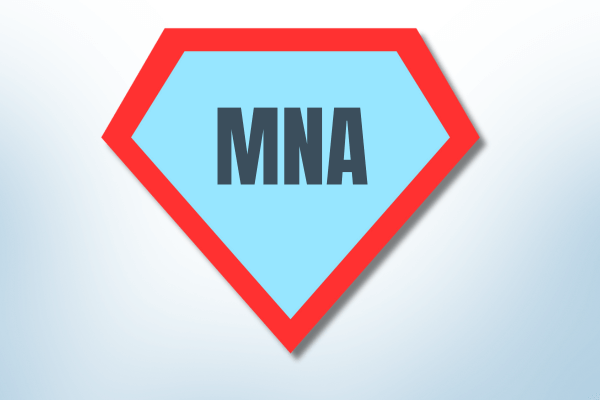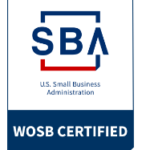Before we dig into the superpower of a Member Needs Assessment, I have to clarify something: A member survey is not a member needs assessment. A poll for demographic data or a satisfaction survey is a great activity, but they’re too shallow and inwardly focused to provide the same value as an assessment of a membership’s needs. Can these things all be combined? Sure…With some caveats.
A Member Needs Assessment (MNA) is a structured research process that membership-based organizations use to understand what their members (or stakeholders) value, need, and expect. It’s essentially a feedback loop that guides decision-making, programming, and resource allocation.
A Decision-Making Super Power
What program would you launch if you knew it would be well-received? How much easier would budgeting be if you knew the demand for programs, events, and other funding channels ahead of deploying them? With some reasonable accuracy, you can have these insights. The goal is to obtain the information early enough in your planning process to inform your strategy before deployment. Finding out two years into a three-year plan that 75% of your membership is shifting to a new certification program or attending an up-and-coming conference that wasn’t even entirely on your radar is the epitome of bad timing. You’d almost rather be blindsided than find out too late to respond appropriately, right?
When an MNA is done regularly—no, religiously—it can help an organization create a nimble and informed strategy. If you’re building a strategy based on the “wisdom in the room” — meaning your board and team —youre scope is too limited to make informed decisions. Your board is likely not representative of the entire membership field…Am I right? And your team has likely not been in the member’s seat for a long time, and possibly ever. Am I right? As wonderful and needed as these folks are, they’re not your secret weapon when it comes to a member-focused strategy.
And a Superpower for Your Members
Your organization conducts an MNA, however, it can benefit all members and their teams. Your members are talking to supporters, applying for grants, and advocating for their organizations daily. The data you’re collecting is like adding premium fuel to their fire. It’s one thing to speak on behalf of your organization; it’s quite another to represent the voice of the field. Best of all, if everyone is leveraging the same data simultaneously across a broad market, all your voices will suddenly be heard more powerfully. Singing in unison is always better than a solo act.
In a recent piece for Association Adviser (“Driving Member Engagement and Revenue Growth Through Data-Driven Strategies”), it is noted that associations using insight and research are better able to “stay relevant and competitive by deepening their understanding of member needs, making informed decisions, and uncovering new revenue opportunities.”
Beyond Demographics: Find your Member Value Proposition through a Member Needs Assessment
If your members’ employer were to stop paying for their membership, would they continue? Not if they don’t recognize the value! A 2025 Community Brands study found that more than half of members whose employers pay dues would rethink or drop membership if they had to pay themselves—meaning value must be crystal-clear and evidenced in benefits members actually want.
How do your members value your organization? Do they consider membership part of their professional identity? Hopefully, they do. The only way to tell is to ask! We encourage clients to use creative questioning —e.g., personification, scenarios, and descriptive prompts — to dig into their organization’s brand perception and its value proposition for members. Your value proposition is as critical as your dues level. You must know it and own it.
Survey Fatigue is Real
We often think of member research as an operational activity that shouldn’t require additional expense. Our people love us…they’ll respond, right? Wrong. Go to deploy the survey or focus group and realize that getting people to show up is hard. People have survey fatigue, and we’re more overscheduled than ever before.
To get an adequate response, you may need to incentivize people to respond. This doesn’t need to be a cash payout; rather, it can be a discount on your organization’s programming, an upcoming event, or even a free download. When you provide value in exchange for their time, your members feel valued. Plus, if you’re able to use an internal discount or free resource, you’re actually promoting engagement while learning more about your audience. It’s a win-win.
Listen to the Crowd and not the Loud
You will get LOUD comments anytime you ask for feedback. Some people only shout. Will you get feedback that stings a bit? You bet. That doesn’t mean that their input is representative of your entire membership. Rely on statistical data to support the narrative comments. If the data doesn’t back up one-off or outrageous comments, do not consider them representative of all those that you serve. Coding comments based on the main topic mentioned or tone can help you sort out what is representative of a majority opinion and what is not.
Impartial and Expert Guidance Makes a Difference
Can you do a member needs assessment internally? Possibly. It depends on your organization’s time, capacity, and expertise. Knowing how to structure a survey is critical, and conducting an impartial focus group with internal team members is impossible. Sorry, it is. You cannot ask people for candid feedback about your organization when you’re employed by it. What you receive in response will be far from impartial. Nonprofit Nav partners with organizations to create member research studies that are engaging, informative, and fun for the respondents. Let us help you uncover all the insights and create a member value proposition that informs your decision-making and helps design an undeniable value proposition for your members.
Send our team an email at info@nonprofitnav.com to learn more about how we can create a Member Needs Assessment that gives your team clarity and confidence in their plans.



